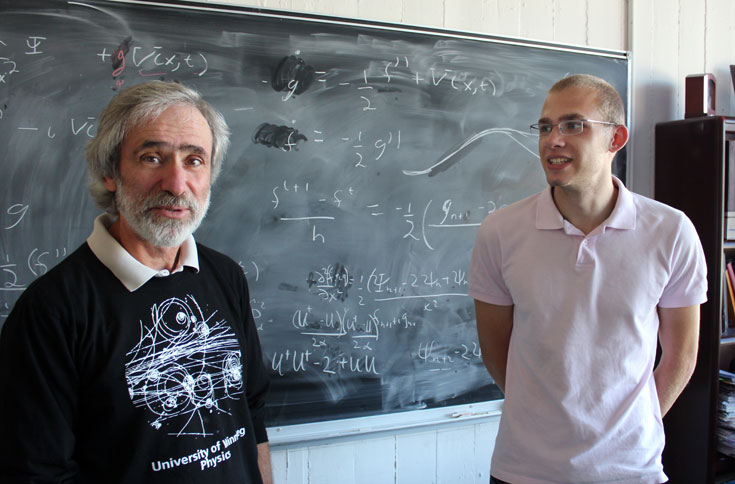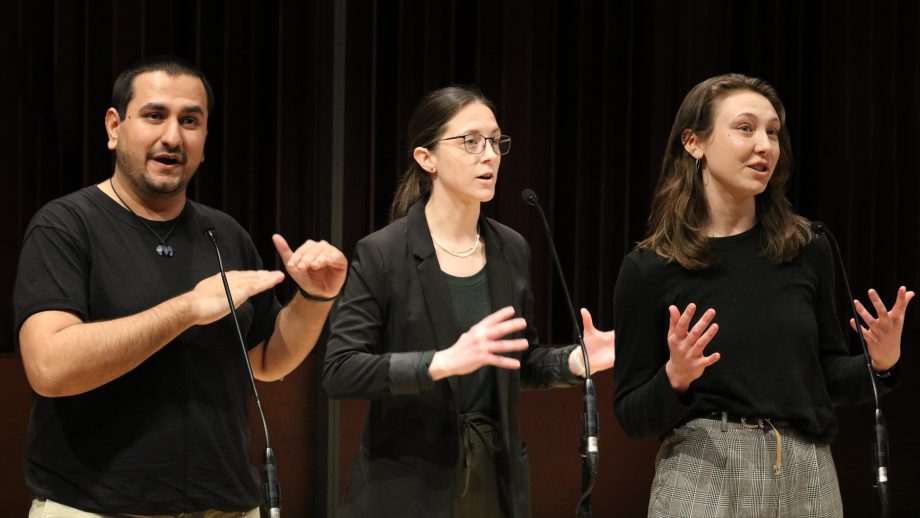Dr. Gabor Kunstatter’s research concentrates on perhaps the most important question in theoretical physics today: what is the ultimate theory that unifies Einstein’s theory of gravity with quantum mechanics? Einstein’s theory explains the motions of planets, galaxies and the universe as a whole, while quantum mechanics describes the subatomic world.
Both theories have been well tested in their own realms, but they appear incompatible with each other. Kunstatter looks for clues to the ultimate unified theory by studying black holes, regions of space whose gravitational pull is so strong that everything, including light, is trapped forever. At the very center of every black hole, invisible to the outside world, lurks a singularity, which is quite literally a “tear in the fabric of space-time” where the known laws of physics break down.
Kunstatter has inspired many a shining undergraduate student to work with him and pursue physics research. This year talented UWinnipeg fourth year mathematical physics student Nils Deppe is helping Kunstatter with the analysis by constructing mathematical models of black holes that are simple enough to be studied rigorously while at the same time complicated enough to retain the key features of real black holes. These math models can sometimes be done by hand, but more often require a ‘super’ computer that can take large amounts of data to help solve the equation.
While working with Kunstatter, Deppe has increased his understanding of gravitational theories, field theories and Hamiltonian constraint analysis.
“I have had opportunities to present my research to students and professors at physics conferences,” explained Deppe. “My research with Dr. Kunstatter has also allowed me to develop a good understanding of numerical analysis, and creating computer code to solve physical problems with various numerical techniques.”
“The topics I work on are quite advanced and highly mathematical,” expressed Kunstatter. “The undergraduates need to enjoy both mathematics and physics. Enthusiasm for these subjects is as important as proficiency and I have had the excellent fortune to be able to work with some wonderful students, at both graduate and undergraduate levels.”
For more information on the study of physics and options that are available to you, please visit UWinnipeg’s physics department.





